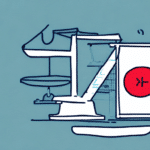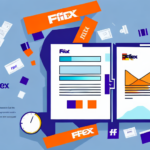Understanding the Benefits of the Dim Divisor Method
If you're seeking a financial strategy to optimize your business operations and maximize resource utilization, the Dim Divisor Method might be the solution. Gaining traction among small businesses and startups, this method offers a structured approach to cost allocation and pricing strategies. This article delves into the essence of the Dim Divisor Method, its operational mechanics, advantages, drawbacks, implementation strategies, real-life applications, common misconceptions, and how it stacks up against other financial strategies. By the end, you'll be equipped with the knowledge to determine if this method aligns with your business goals.
What is the Dim Divisor Method?
The Dim Divisor Method is a financial strategy designed to allocate costs and expenses efficiently, particularly for service-based businesses such as consulting, marketing, or design firms. The core principle involves dividing your total costs by a "dim divisor," representing the number of billable hours anticipated during a specific timeframe. This calculation yields an accurate hourly rate, allowing businesses to adjust pricing and services based on comprehensive cost assessments.
Core Components
- Overhead Costs: Monthly expenses like rent, utilities, salaries, and software licenses.
- Desired Profit Margin: The percentage of profit a business aims to achieve.
- Billable Hours: The number of hours expected to be charged to clients.
By integrating these components, businesses can determine a break-even point and set prices that ensure profitability without compromising service quality.
Applicability
While the Dim Divisor Method offers significant benefits, it's not universally applicable. Businesses with highly variable costs or those operating on project-based pricing models might find it less effective. However, for service-oriented businesses with stable costs and predictable billable hours, this method serves as a robust tool for financial optimization.
How the Dim Divisor Method Works
The Dim Divisor Method operates by calculating an accurate hourly rate based on overhead costs, desired profit margins, and expected billable hours. Here's a step-by-step breakdown:
Calculation Formula
Dim Divisor = (Overhead Costs + Desired Profit) / Billable Hours
Illustrative Example
Consider a marketing agency with the following monthly metrics:
- Overhead Costs: $10,000
- Desired Profit Margin: 30%
- Expected Billable Hours: 200
Applying the formula:
Dim Divisor = ($10,000 + 30% of $10,000) / 200 hours = $15,000 / 200 hours = $75 per hour
This means the agency needs to charge at least $75 per hour to cover costs and achieve the desired profit margin.
Adjusting for Market Factors
Beyond mere calculations, businesses should consider factors like expertise, market demand, and competition when setting final prices. Additionally, pricing can be tailored based on client budgets, project complexity, and the value offered.
Advantages and Disadvantages
Advantages
- Accurate Pricing: Provides a precise hourly rate based on actual costs and billable hours.
- Strategic Pricing: Aligns pricing strategies with business goals and client needs.
- Cost Optimization: Identifies opportunities to reduce overhead or increase operational efficiency.
- Value-Driven: Encourages a focus on delivering value rather than merely selling time or services.
- Competitive Edge: Differentiates businesses from competitors using arbitrary pricing models.
Disadvantages
- Financial Literacy Required: Demands a good understanding of financial principles to implement effectively.
- Not Universally Applicable: Less effective for businesses with unpredictable costs or non-billable work.
- External Factors: May not account for market trends, economic shifts, or regulatory changes.
- Value Perception: Might not fully capture the unique value or expertise offered to specific clients or projects.
- Pricing Flexibility: Can restrict the ability to negotiate prices or offer discounts, especially for long-term clients.
Implementing the Dim Divisor Method in Your Business
Adopting the Dim Divisor Method involves several steps to ensure accurate calculations and effective pricing strategies:
Step-by-Step Implementation
- Calculate Your Dim Divisor: Use the formula to determine your hourly rate based on overhead, desired profit, and billable hours.
- Adjust Pricing Strategy: Align your pricing with the calculated divisor, considering client budgets and value propositions.
- Monitor Financial Metrics: Regularly track costs, billable hours, and revenues to adjust the dim divisor as needed.
- Transparent Communication: Clearly convey your pricing strategy to clients, emphasizing the value and benefits they receive.
Best Practices
- Regular Reviews: Periodically reassess the dim divisor to reflect changes in business operations or market conditions.
- Client Feedback: Incorporate client feedback to refine pricing and service offerings.
- Professional Advice: Consult with financial advisors to optimize the implementation and integration of the method.
Real-Life Examples of the Dim Divisor Method in Action
To illustrate the practical application of the Dim Divisor Method, let's explore examples from different service-based businesses:
Software Development Firm
A software development company calculates its hourly rate as follows:
- Overhead Costs: $20,000/month
- Desired Profit Margin: 40%
- Expected Billable Hours: 160/month per developer
Dim Divisor = ($20,000 + 40% of $20,000) / 160 = $28,000 / 160 = $175 per hour
To remain competitive, the firm offers tiered pricing packages based on project scope and complexity, ensuring flexibility while maintaining profitability.
Graphic Design Agency
A graphic design agency determines its project-based fees using the Dim Divisor Method:
- Overhead Costs: $12,000/month
- Desired Profit Margin: 50%
- Expected Billable Hours: 80/month per designer
Dim Divisor = ($12,000 + 50% of $12,000) / 80 = $18,000 / 80 = $225 per hour
The agency structures its pricing into creative packages that encompass branding, messaging, and collateral design, providing comprehensive solutions to clients.
Debunking Common Misconceptions About the Dim Divisor Method
Several myths surround the Dim Divisor Method, leading to misunderstandings about its applicability and effectiveness:
Misconception #1: It's Exclusively for Consultants
Contrary to popular belief, the Dim Divisor Method isn't limited to consultants. Any business relying on billable hours, including software developers, designers, lawyers, and accountants, can benefit from this approach.
Misconception #2: It's a One-Size-Fits-All Formula
The Dim Divisor Method is highly customizable, allowing businesses to tailor it to their unique needs and objectives. Regular adjustments ensure it remains relevant amidst changing business dynamics.
Misconception #3: It Guarantees Profitability
While the Dim Divisor Method provides a structured pricing strategy, it doesn't ensure success on its own. Effective management, marketing, and client relationships are equally crucial for business profitability.
Comparing the Dim Divisor Method to Other Financial Strategies
Understanding how the Dim Divisor Method stacks up against other financial strategies can help businesses choose the best approach for their needs:
Traditional Hourly Rate
This method charges a fixed rate per hour without accounting for actual costs or value delivered. While simpler, it may not reflect true business expenses or the value provided to clients.
Flat Fee
Flat fee pricing involves charging a fixed price for specific projects or services. Although it offers predictability, it may not accommodate unforeseen costs or scope changes.
Value-Based Pricing
Value-based pricing sets fees based on the perceived value or impact of the service rather than costs or time. It can be more lucrative but requires clear communication of value to clients.
Average Hourly Rate
This approach calculates the average rate across all billable hours, ignoring specific overhead costs or profit margins. It offers simplicity but lacks precision in pricing strategies.
Tips for Optimizing the Dim Divisor Method
To maximize the effectiveness of the Dim Divisor Method, consider the following strategies:
- Meticulous Tracking: Keep detailed records of costs, expenses, and billable hours to ensure accurate calculations.
- Flexible Pricing: Experiment with different pricing models to find what resonates best with your clients and business objectives.
- Value Delivery: Prioritize delivering exceptional value to clients, which can justify higher pricing and foster client loyalty.
- Stay Informed: Keep abreast of market trends, regulatory changes, and technological advancements that may impact your business.
- Continuous Learning: Invest in professional development to enhance your skills and service offerings, maintaining a competitive edge.
Key Considerations When Using the Dim Divisor Method
When implementing the Dim Divisor Method, keep the following considerations in mind to ensure its effectiveness:
- Comprehensive Understanding: Fully grasp the mechanics of the Dim Divisor Method before implementation, seeking expert advice if necessary.
- Transparency with Clients: Clearly communicate your pricing strategy and the value provided to build trust and accountability.
- Adaptability: Remain flexible and willing to adjust pricing and services in response to changing business environments or client needs.
- Integrative Approach: Utilize the Dim Divisor Method in conjunction with other financial and business strategies to achieve holistic business goals.
In conclusion, the Dim Divisor Method offers a structured framework for service-based businesses to optimize pricing and expense allocation. By implementing this method, businesses can enhance profitability, ensure sustainability, and maintain competitiveness in a dynamic market landscape.




















